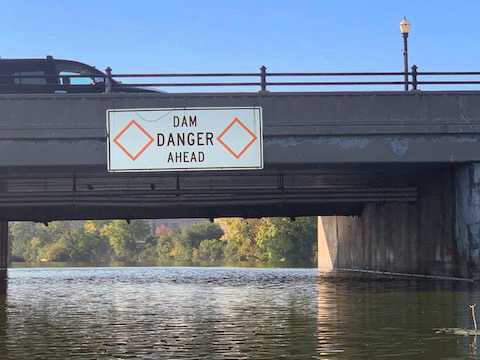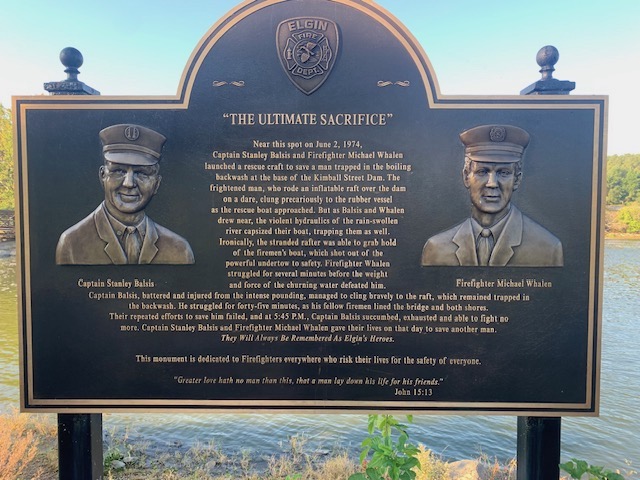Since the very beginning of the organization in 1991, Friends of the Fox River (FOTFR) has been advocating for dam removal. The mission of the Friends of the Fox River is to preserve, restore and protect the Fox River Watershed’s resources by connecting people with nature through education, research, restoration and advocacy. Restoring the health of the Fox River through dam removal is not a new vision for Fox River protectors. But the very recent awareness from the general public is very new. For FOTFR and other river protectors, these are very exciting times in river restoration. Fox River Watershed (at least in Kane County) residents are learning and uniting in the promotion of dam removal.
Science Not Alternate Truths
The discussion on dam removal among the scientific community has been consistent but its growth in the public sector has been much like a snail race, slow. The discussion now is spreading like a wildfire. With the release of the Fox River Study Group’s (FRSG) 2022 Fox River Implementation Plan (FRIP), Illinois Department of Natural Resources’ (IDNR) financial commitment to fund dam removals, and the U.S. Army Corps of Engineers (USACE) very recently released River Connectivity Study’s recommendations for the removal and funding support for nine dam removals, the public and their municipal representatives are getting a crash course in what dam removal has to offer. The science is clear, but fear and misinformation about significant change has muddied the waters of reality.
The History
The back story is essential to understand the situation. A glacial episode created the Fox River landscape over 10,000 years. The result was a resource-rich opportunity for humans. Native Americans and early Europeans enjoyed the abundance of biological and transportation resources the Fox Valley provided. Nobody thought that they owned the river. But that changed in the early 1800’s.
“I have on my claim the best place for waterpower which I have found on the river from its source to some distance below this…
— James T Gifford, founder of Elgin, in a letter to his wife Laura, April 11, 1835
The Fox is the finest stream I ever saw, it has uniformly in this State a limestone bottom, its current uniform and gentle, its waters pure, and is abundantly supplied with fine Fish.”
The long human river relationship changed to an attitude of ownership. Many piers into the river had an outhouse at the end. Industry dumped their untreated waste into the Fox. By 1914, the Illinois Department of Public Health warned that the Fox River was a human health risk.
Obsolete Dams
The dams were built to provide mechanical power and ice production. It was a great industrial era. But now, we all have electricity in our homes and ice in the freezer. The dams remain as a drowning liability, maintenance liability, degradation of habitat for half the river, and an obstacle for meeting water quality standards. The list for dam removal benefits is very long, the legitimate concerns is a very small list.
Following the Clean Water Act in the early 1970s we have seen a very substantial improvement in river health despite population increases and urban sprawl. That improvement has reached a limitation and stalled. The sprawling change in land cover beginning in the 80s has interrupted the progress. In the early 2000s, the entire mainstem of the Fox and some tributaries were categorized as impaired waters by the Illinois Environmental Protection Agency (IEPA). That status has some serious implications for all of us. Much like an endangered species status, a plan for removal from the list is mandated by the state and in our case the federal government. Taking action is not a choice. What action is taken is a choice.
Action is NOT a Choice
The first action was the development of the FRSG, to research what river healing actions would be most feasible. The FRSG jurisdiction includes from Algonquin to Yorkville. The Fox River Implementation Plan recommendation #1 in 2015 was the $175,000,000 retrofit of every wastewater treatment plant to remove phosphorous. That has been completed using local funding. But the Fox is not ready to be removed from the impaired list. FRIP recommendation #2 in 2022 is dam removal. Removing the dams is the most economically efficient and ecologically impactful action available. The dams are obsolete, and the choice is scientifically supported with over two decades of research and examples of many dam removals (60 in the US just last year).
Disaster Relief
The IDNR has been funding dam removals in northeastern Illinois because of the threat to public safety the dams pose. And they are very interested since they own half of them. The U.S. Army Corps of Engineers has studied the Fox River for over a decade and just released their plan that recommends the removal of nine dams. A very important point here is that the USACE is offering a 65% cost share for dam removal. The economics offered are $15,000,000 for dam removal, to be facilitated with USACE & IDNR support. The other action choice is a $150,000,000 wastewater treatment upgrade which will NOT be funded by the federal or state government. This offer is probably a once-in-a-lifetime opportunity.
Your Choice
The USACE & IDNR have publicly stated that they will not force any community to remove their dam. It is up to each municipality. If a community welcomes the USACE assistance to discuss their individual situation, then they are considered “in the plan.” If they reject the offer, they are on their own for taking the actions of dam maintenance, drowning liability, and somehow meeting the IEPA requirement for removing the Fox’s local impairments.
Take Action
- Educate yourself at FOTFR.org where you will find links
to all you need. - Share what you know with your friends, family, and
other social circles. - Support your municipal representatives that support dam removal.
- Submit your public comment to the ACOE by 11/6/23 to Fox-River-Study@usace.army.mil




